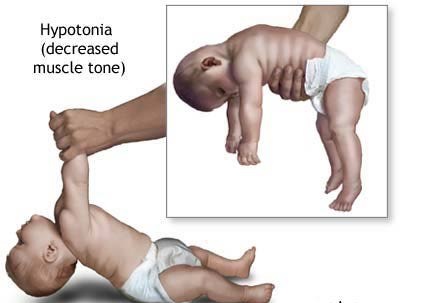Physiotherapy management of hypotonia (2)
Arku Jasmine
Life
 Most babies with hypotonia will require a lot of stimulation in order to use their muscles in the appropriate way and as they grow older, specific exercises will also help them improve their posture, coordination and muscle strength.
Most babies with hypotonia will require a lot of stimulation in order to use their muscles in the appropriate way and as they grow older, specific exercises will also help them improve their posture, coordination and muscle strength. The focus of management is to facilitate the development of the child’s optimal motor or movement patterns whilst building strength.
Children with hypotonia have the desire to move, just as any other child but the movements sap their energy and they easily become tired after a brief period of activity.
It’s essential for parents and caregivers to understand this and encourage the child to go the extra mile but also they should allow the child to take rest in between activities.
Criticising or calling the child ‘lazy’ only places undue pressure on the child.
The physiotherapist assists the parents/ caregivers to encourage the development of gross and fine motor skills in the child’s daily activities.
Gross Motor Control
Gross motor activities involve the use of the large muscles of the body. Examples of gross motor movements include rolling, walking and crawling whilst fine motor movements involve the use of the small muscles of the body to perform movements like picking small objects with the hand.
Some of the activities to encourage include;
• Allowing the baby to lie on its stomach often, especially when he is awake to stimulate movement. When the baby bears weight in his upper limbs, it also improves the muscle tone. This position also helps the baby to attain head control.
• Whenever the baby is in a sitting position, you need to ensure that the baby’s back is supported to prevent a round back.
Place toys around the baby to encourage him to shift his weight from side to side and forwards and backwards since he would need to improve his balance in sitting to attain independent sitting.
The support for his back also helps the baby to gradually build his torso strength to maintain an upright position without using his hands as a means of supporting himself. This position also enhances exploration for the baby and prepares him to begin to crawl. Bouncing the baby on your lap or on a large rubber ball whilst it is supported in a sitting position will also improve the muscle tone.
• The physiotherapist will facilitate rolling and also educate the parent/caregiver so that it’s incorporated into the baby’s activities.
• In the preparation to encourage reciprocal crawling, the baby may be placed on all fours to strengthen weight bearing in his upper and lower limbs whilst he is gently rocked to get used to this position.
As the baby gains balance, movement/ crawling is then introduced.
• Muscle strengthening enhances muscle power, muscle endurance, movement patterns and optimal posture of the child. It’s essential to encourage the baby to build core strength through continuous practice of active movements and also through movements against gravity.
For example, instead of allowing the baby to play with toys only on his back because he has not achieved independent sitting, allowing him to sit with support and play helps him to build strength.
• Weakness in the back and abdominal muscles may occur, which typically presents as difficulty in moving against gravity and maintaining an appropriate alignment.
There may be an overuse of muscles on the front aspect of the trunk which limits activation of the back muscles. Hence the baby has a poor connection between his upper and lower body and also finds it difficult to maintain an optimal posture and alignment whenever he moves.
Activities such as trunk rotations in lying or sitting positions with a ball or a large toy encourages trunk control and this will eventually strengthen the muscles of the trunk.
Conclusion
Physiotherapy is essential in assisting your child to attain unsupported movement to enhance his/her participation in activities in school and at home.
You need to be patient with your child if he/she has hypotonia and continue to encourage him/her as he progresses through his/her developmental milestones.
By Dorothy Akua Adjabu/The Mirror/Ghana
The writer is a senior physiotherapist at the 37 military hospital. Email: [email protected]